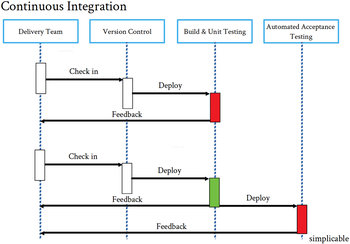
Innovation
Innovative firms tend to ship their products early and often. This allows for constant refinement, aggressive change and response to competitive challenges.Product Development
Getting a minimum viable product in front of customers as quickly as possible in order to improve product positioning, promotion, pricing, branding and distribution.Service Development
Launching services to customers tends to require an extensive development effort that may impact sales, marketing, operations, processes, systems and infrastructure. As such, it is common to launch services without full operations support at first. When services are a commercial success, operational capabilities are added. For example, a service might be launched with manual support and billing processes that live outside a firm's systems until commercial volumes justify the system development effort.Pilots
It is a common practice to run a pilot phase in any high risk venture such as a rebranding.Systems Development
Programs and projects to develop or improve business capabilities, processes and systems are often broken into phases designed to reduce the chance of project failure.| Overview: Phased Implementation | ||
Type | ||
Definition | Developing and launching a business, brand, product, service, process, capability or system by breaking the work into phases. | |
Related Concepts | ||
























